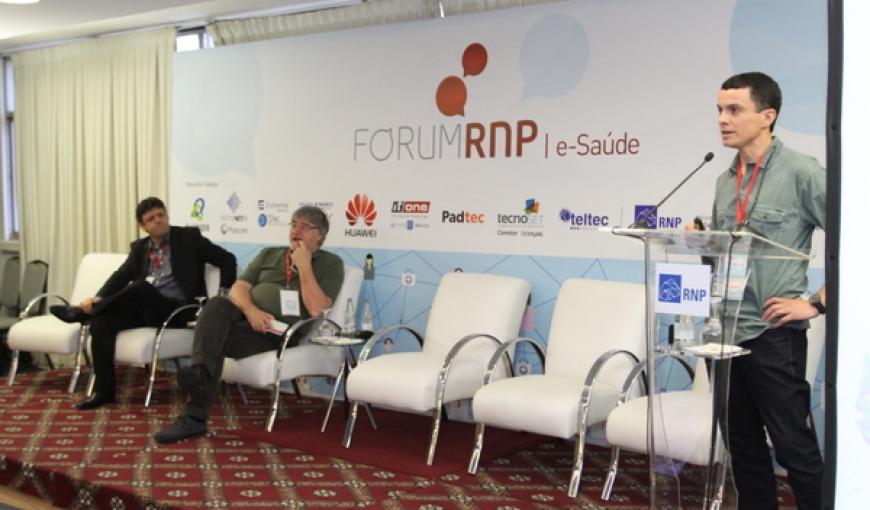RNP Forum defines and discusses e-Science and cyberinfrastructure
The e-Science was defined and discussed in the afternoon, on the last day of the III RNP Forum. The theme also comprehended lectures on cyberinfrastructure.
Opening the debate, the performance engineer of the Ohio University, Alex Berryman, spoke about the Demilitarized Zone project to Support Science, Science DMZ, that studies and spreads the best infrastructure network practices in campus for scientific applications.
He gave examples of the use of the initiative, such as the application in collaborative review and maintenance of Physiotherapy patient data, as well as the control of microscopes from the classroom, in the context of Physics.
Berryman explained that “the important thing about the project is having a performance engineering, which involves meeting with researchers and understanding what they want to achieve”. That is, it highlighted the importance of the Science DMZ for future planning, in order to “verify whether the (computational) structure supports other activities, as well as funding”.
Further, professors Antônio Carlos Costa and Patricia Alcântara demonstrated the use of the Collaboration and Visualization Panel at the Bahia School of Medicine and Public Health (Ebmsp). Supported by RNP in partnership with the academic community, the tool allows media sharing and greater user interaction in collaborative activities of teaching and research.
“The resident presents a case and the doctor makes the comment, with the presence of experts and students. The tool approaches two ends (the Santa Isabel Hospital of Ebmsp) without putting the patient in a vulnerable situation, with a large number of people in the room”, said professor Patricia. “To my joy, young students and mentors were very excited (with the website). The expectation now is that the transmission can encompass surgical procedures, since Santa Helena is a highly complex hospital”, she added.
Cyberinfrastructure
The panel also addressed the issue cyberinfrastructure. For the RNP Research and Development director, Michael Stanton, regarding research infrastructures, “what matters for governments is that the data are shared and infrastructures are not utilized only by their owners”.
"In the LNCC (Laboratório Nacional de Computação Científica) context, when we talk about e-Science we refer to the computational support that should be provided for the various areas of science”, conceptualized the researcher Antônio Tadeu Azevedo Gomes.
When presenting the National System for High Performance Processing (Sistema Nacional de Processamento de Alto Desempenho - Sinapad), an initiative of the Ministry of Science, Technology, and Innovation (Ministério da Ciência, Tecnologia e Inovação - MCTI) managed by LNCC, Gomes revealed that “many people do not know the system. We have many cases of researchers who could use the system, but do not know it. We need training, capacity building, and disclosure. The appeal of the Ministry has been linked to the development of computational structure, but not to what is around it”, he said.
The professor at the Federal University of Santa Catarina (Universidade Federal de Santa Catarina - UFSC) and member of the Stela Institute, Roberto Pacheco, argued that "cyberinfrastructures are digital commons”. “Cyber is the infrastructure we need for the knowledge economy. Commons is every feature that a group of individuals shares in which there is conflict of interest”, he defined.
He explained that cyberinfrastructures are intangible assets because they involve knowledge. “There is a set of principles which, when respected by individuals, make a robust commons. Some examples are the Lattes Platform, the Innovation Portal, under construction, and the Aquarius platform”, he listed.
